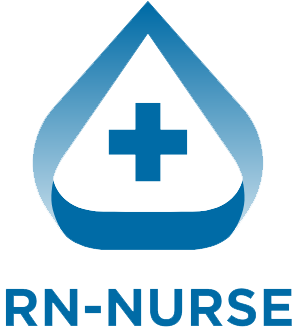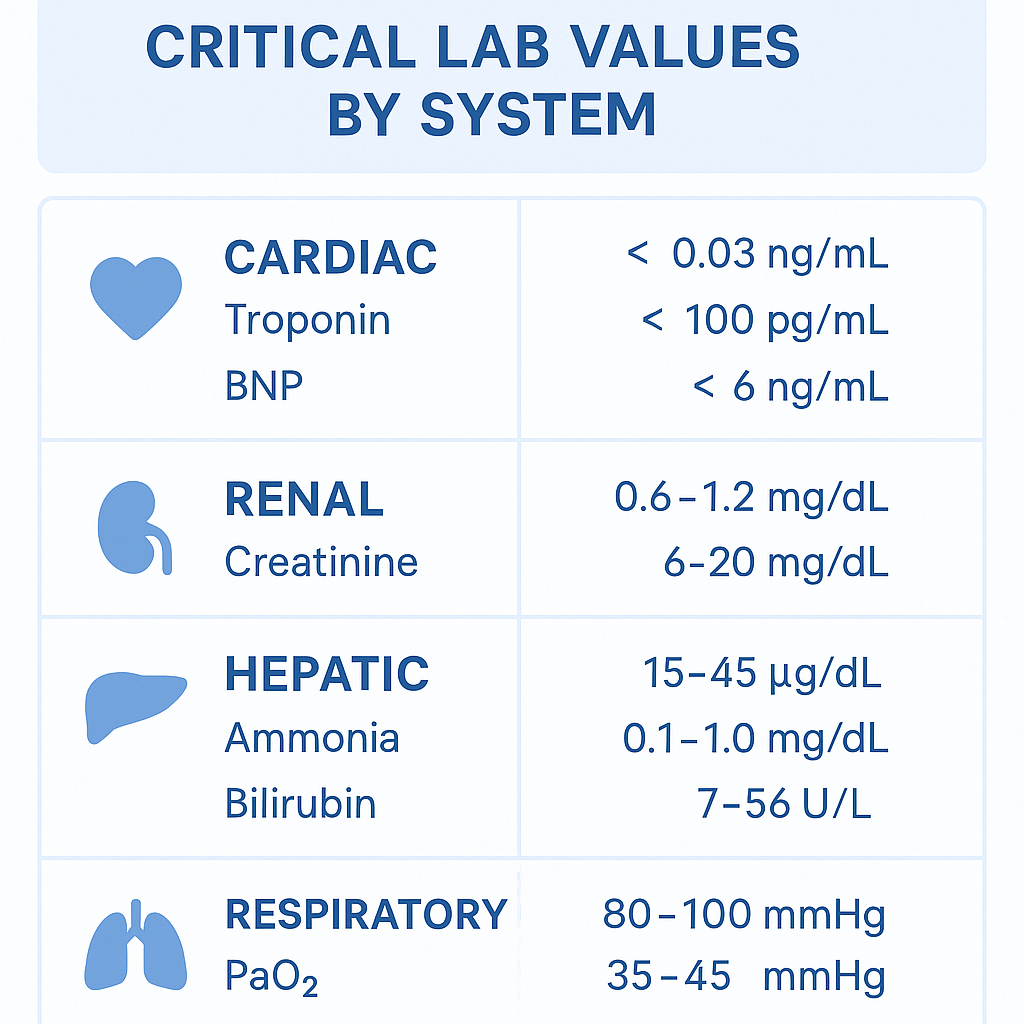For every nurse, especially those preparing for the NCLEX, understanding lab values is essential. Lab results often guide treatment decisions, indicate life-threatening conditions, and help a registered nurse (RN nurse) spot complications before they worsen. Whether you’re in school, reviewing your nursing bundle, or practicing as a bedside nurse, having a lab value cheat sheet by system is a must.
This guide breaks down critical labs by system, making them simple to review and remember.
🫀 Cardiac Labs
Cardiac health is a priority for every nurse. Labs can detect ischemia, heart failure, and myocardial injury.
- Troponin I & T → Gold standard for myocardial infarction (elevated = cardiac injury).
- CK-MB (Creatine Kinase-MB) → Elevated in myocardial damage, though less specific than troponin.
- BNP (B-type Natriuretic Peptide) → Increased in heart failure; helps a nurse monitor fluid overload.
- Potassium (3.5–5.0 mEq/L) → Both hypo- and hyperkalemia can trigger dangerous arrhythmias.
👉 NCLEX Tip for nurses: Always put cardiac monitoring in place when potassium or troponin is abnormal.
🩸 Renal Labs
Kidney function labs are vital in nursing practice, especially in patients with dehydration, renal disease, or on nephrotoxic drugs.
- Creatinine (0.6–1.2 mg/dL) → Best indicator of renal function.
- BUN (Blood Urea Nitrogen, 10–20 mg/dL) → Elevated in dehydration, GI bleed, or renal failure.
- GFR (Glomerular Filtration Rate) → <60 mL/min/1.73m² indicates chronic kidney disease.
- Electrolytes (Na⁺, K⁺, Mg²⁺, Ca²⁺, Phosphate) → Imbalances cause cardiac, neurological, and muscular issues.
👉 RN nurse priority: Monitor urine output (<30 mL/hr = red flag).
🩻 Hepatic (Liver) Labs
As a registered nurse, recognizing liver dysfunction early is crucial in conditions like hepatitis, cirrhosis, and drug toxicity.
- AST & ALT (10–40 U/L) → Elevations suggest liver injury.
- Bilirubin (0.3–1.0 mg/dL) → High levels = jaundice or bile obstruction.
- Albumin (3.5–5.0 g/dL) → Low levels indicate poor liver function or malnutrition.
- INR/PT → Elevated in liver failure due to impaired clotting factor production.
👉 NCLEX Alert for nurses: Jaundice + high bilirubin + elevated INR = risk for bleeding crisis.
🧠 Neurological / Endocrine Labs
A nurse must connect lab changes to mental status changes or altered consciousness.
- Sodium (135–145 mEq/L) → Too high/low → seizures or confusion.
- Blood Glucose (70–110 mg/dL) → Hypoglycemia can mimic stroke; hyperglycemia is dangerous in DKA or HHS.
- Ammonia → Elevated in hepatic encephalopathy; monitor mental status.
- TSH / T3 / T4 → Monitor thyroid function in endocrine disorders.
👉 NCLEX Tip: Low sodium + confusion in older adults = possible hyponatremia emergency.
🫁 Respiratory Labs
Respiratory labs help a nurse identify acidosis, alkalosis, and oxygenation issues quickly.
- ABGs (Arterial Blood Gases)
- pH: 7.35–7.45
- PaCO₂: 35–45 mmHg
- HCO₃⁻: 22–26 mEq/L
- SpO₂ (>95%) → <90% = critical low oxygen.
- D-dimer → Elevated in PE or DVT suspicion.
👉 RN nurse focus: If SpO₂ < 90% despite oxygen therapy, call the provider.
🧪 Quick NCLEX Lab Value Triggers
- Potassium <3.0 or >6.0 = life-threatening arrhythmia risk.
- Sodium <120 = seizure risk.
- Troponin elevation = myocardial infarction until proven otherwise.
- Creatinine >2.0 = kidney injury concern.
- INR >4.0 = bleeding risk emergency.
📌 Final Nursing Takeaway
For nurses and RN nurses, remembering lab values is not just about memorization — it’s about patient safety. By reviewing labs system by system, you can quickly connect abnormal values to nursing priorities.
For those preparing for the NCLEX, using a nursing bundle or lab value cheat sheet will make studying easier and clinical practice safer.

